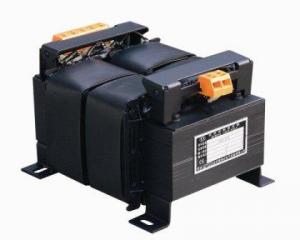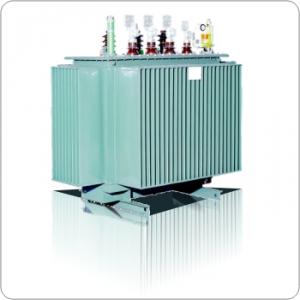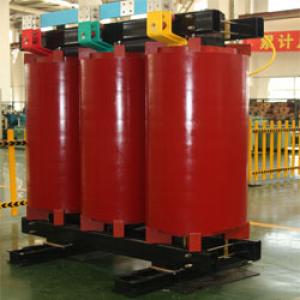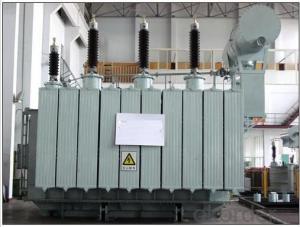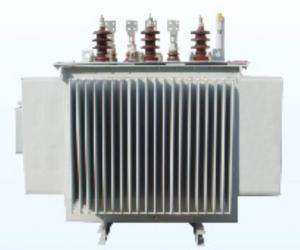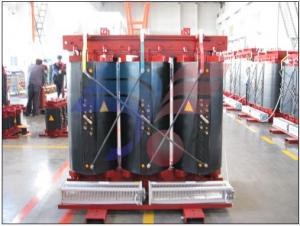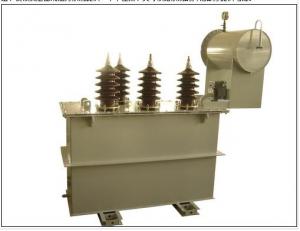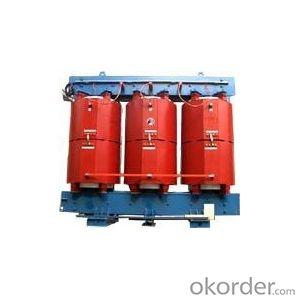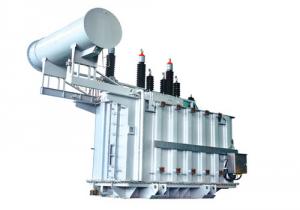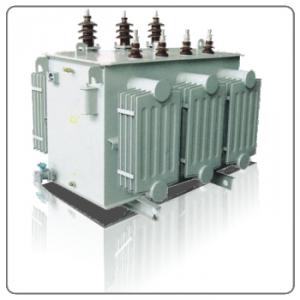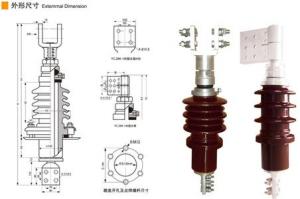BK series machine tools control transformers
- Loading Port:
- Shanghai
- Payment Terms:
- TT OR LC
- Min Order Qty:
- -
- Supply Capability:
- 10000pcs pc/month
OKorder Service Pledge
OKorder Financial Service
You Might Also Like
1.Application
BK series machine tool control transformer is suitable for circuit of 50~60Hz, voltage up to 500V, usually applied as power supply for machine tool electrical appliances, local lightings and indicator lamps.
2.Structure character
According to different structures, BK transformer belongs to shell type, and according to the installation mode, it belongs to vertical type.
3.Working environment
1.Ambient air temperature: -5oC~+40oC, the highest monthly mean temperature should not exceed +30oC;
2.Altitude for installing place should not exceed 1000m;
3.When the ambient air temperature is +40, the relative humidity should not exceed 50%, and it allows higher relative humidity under lower temperature. Max average humidity in the dampest month is 90%, meanwhile the lowest average temperature of this month is +25oC, and condensation on the product surface caused by temperature change should be taken into consideration.
4.Specification
| Model | Overall size(mm) | Hole distance for installation(mm) | Installation hole (mm)K x J | |||
|---|---|---|---|---|---|---|
| Bmax | Dmax | Emax | A | C | ||
| BK-50 | 76 | 76 | 83 | 61±0.4 | 54±3 | 5 × 12 |
| BK-100 | 84 | 92 | 100 | 70±0.4 | 60±2.5 | 6 × 12 |
| BK-150 | 96 | 105 | 110 | 80±0.4 | 62±2.5 | 6 × 12 |
| BK-250 | 105 | 120 | 125 | 88±0.4 | 73±3 | 9 × 11.5 |
| BK-300 | 115 | 125 | 125 | 95±0.4 | 76±3 | 9 × 11.5 |
| BK-400 | 120 | 130 | 130 | 100±0.4 | 80±3 | 9 × 11.5 |
| BK-500 | 134 | 144 | 150 | 100±0.4 | 86±3 | 9 × 11.5 |
| BK-700 | 150 | 150 | 158 | 125±0.4 | 100±3 | 9 × 11.5 |
| BK-1000 | 150 | 153 | 160 | 125±0.4 | 110±3.5 | 9 × 11.5 |
| BK-1500 | 160 | 240 | 137 | 134±0.4 | 116±3.5 | 9 × 11.5 |
| BK-2000 | 189 | 270 | 145 | 158±0.4 | 122±3.5 | 9 × 11.5 |
| Type | Outline(mm) | Mounting size(mm) | Primary voltage | Secondary voltage | Weight(kg) | QTY/CTN |
|---|---|---|---|---|---|---|
| BK-25VA | 76×80×75 | 63×44 | 220V 380V | 380V,220V,110V,36V,24V,12V,6V (TO BE CHOSEN) | 1.97 | 16 |
| BK-50VA | 85×90×80 | 71×61 | 3.3 | 16 | ||
| BK-100VA | 103×92×95 | 87×69 | 5.5 | 12 | ||
| BK-150VA | 103×100×95 | 87×76 | 6.4 | 8 | ||
| BK-200VA | 103×106×95 | 87×81 | 7.3 | 8 | ||
| BK-250VA | 115×110×130 | 95×84 | 9 | 6 | ||
| BK-300VA | 115×115×130 | 95×86 | 9.87 | 6 | ||
| BK-400VA | 134×132×150 | 107×93 | 13.9 | 4 | ||
| BK-500VA | 134×137×150 | 107×98 | 15.5 | 4 | ||
| BK-1000VA | 153×149×168 | 128×115 | 25 | 2 | ||
| BK-1500VA | 175×185×185 | 140×135 | 17 | 1 | ||
| BK-2000VA | 175×195×185 | 140×145 | 21 | 1 | ||
| BK-2500VA | 207×250×230 | 168×163 | 25 | 1 | ||
| BK-3000VA | 207×250×230 | 168×173 | 28 | 1 | ||
| BK-4000VA | 240×240×250 | 200×160 | 40 | 1 | ||
| BK-5000VA | 240×250×250 | 200×170 | 41 | 1 |
- Q: I am doing a school project of a Wind Turbine; and I need to show a transformer or what a transformer is in a wind turbine. I have just 1 question. WHY DO PEOPLE USE TRANSFORMERS?
- Transformers are used to adjust voltage levels to reduce current and thereby reduce voltage drop in transmission lines.
- Q: I am powering a lighting system with a mixture of SCR dimmers and HID lamps. I am pulling approx 285 amps/leg at 120/208V through a 150 kVA transformer. The 120/208V service coming from that transformer is indicated to be 400A/leg, but it seems to get pretty hot at 285A.
- From your readings ,the transformer is within it's rating. Power Transformers are usually rated to operate at 75 Deg. C and above. Sometimes up to 95 Deg. C. The data and limit will be on the nameplate. 75 Deg. C is uncomfortably hot. 95 Deg. C. will burn you. Note; SCR dimmers WILL produce harmonic currents that will increase the 'neutral load' well above 'phase load' on 'common neutral' circuits, and might be producing some high frequency heating in that T/F.
- Q: I was wondering what year is transformer 2 cuz the first 1 was freakin awesome!!!!!!!!! and i wanted to see a second 1 but dont know which year and i heard there was going to be another one transformers 2.
- Their okorder
- Q: If you're a transformers fan, who do you think were top 10 strongest Autobots in the whole transformers universe? I mean strongest of the strongest, most brutal and powerful?lol.
- TFC transformers cybertron 1: Primus (if he counts as an autobot) 2: vector prime (in his prime/glory days) 3: TFC metroplex 4: TFC quickmix 5: TFC optimus prime 6: TFC jetfire 5: TFC wingsaber 6: TFC landmine 7: TFC red alert (reborn) 8: TFC scattershot (reborn) 9: TFC hot shot (reborn) 10: TFC leobraker TFC totally dominates this list since they are the only version of transformers that can annihallate galaxies.
- Q: If you have two 12 volt transformers and if we connect their hot wires together does the voltage become 24 or 12 volts? Please help, thanks so much!lt;3
- You asked the same question before. Here is the only correct answer again. There is actually a phasing to the transformer windings. If you connect them in series with the phases adding (both hit + 12 at the same instant) you get 24 volts out. If you connect with the phasing wrong (one hits +12 while the other hits -12) and put them in series the output will be zero volts (and they might overheat). If you connect them in parallel with the right phasing you will get 12 volts and the amperage will add to give you the sum of their amperage. If you connect in parallel with the phasing wrong you will get zero output voltage (and the danger of overheating). If the transformers do not make their phasing clear put a voltmeter on the output and briefly turn on the primary while seeing if you get zero or the voltage you want. If the phasing is wring swap the wires of one transformer around and check with the meter again. As long as the phasing is correct there is no problem with either series or parallel. A lot of commercial equipment is made with two low power transformers because two smaller ones are often cheaper commodities to buy than one special-order larger one.
- Q: Can anyone explain what each wire does in this spicific microwave transformer
- The bottom coil with the 2 tabs is the primary. The 2 red wires leading off to the right is a low voltage secondary with high voltage insulation so that they remain isolated from the other windings. It powers the filament of the microwave tube. The other red wire leading off to the left is one end of the high voltage secondary. It normally connects to a high voltage rectifier and capacitor and then to the cathode of the tube via one of the filament connections. You can expect to see negative pulses in the 2000-3000 volt range at that connection with an available current that is several times the lethal level. The other end of the high voltage secondary is grounded to the frame of the transformer at the rivet at the top center. The anode (plate) of the tube is also grounded through its mounting hardware. Most microwave transformers run hot even when lightly loaded since they are run fairly close to saturation on the B-H magnetization curve. You'll need a fan if you are using it for extended periods. If you carefully remove both secondaries and the steel magnetic shunts wedged in between the primary and secondary windings, you'll have the foundation for winding your own transformer good for about 400-600 watts. First add about 10 more turns to the primary which will cut the core losses significantly by running it lower on the curve. Expect to see about 1 volt per turn on any new secondaries you wind. Don
- Q: current of the battery , but not through the output of the transformer but between the input and the battery, why is that?
- An ideal transformer is a equal voltage per turn device. If the secondary winding has 28/115 times the number of turns as the primary winding then it will produce 28/115 as much voltage as that applied to the primary. But an ideal transformer is also a power in equals power out device, so that the product of primary voltage times primary current equals the product of secondary voltage times secondary current. So the secondary current will be 115/28 times the primary current. -- Regards, John Popelish
- Q: I have a standard transformer with 7 wires:2 black2 red2 yellow1 red/yellow stripedWhat connections do these wires correspond to?That is, which should connect internally to the primary coil, the secondary coil, and coil-taps (based on the number of wires, I assume that the secondary coil is tapped).I must determine this in order to connect the wires (externally) appropriately.Any help is greatly appreciated!
- Raptor gave good info. I would add just a few points: 1. The high voltage winding usually has the smaller gauge wire. 2. The high voltage (primary) winding also usually has a higher DC resistance and fundamental frequency impedance than the secondary. 3. Be sure to scrape the insulation off the wires before checking the resistance. Many years ago, an idiot I was working with didn't recognize that the wires had enamel insulation on them, and connected the transformer backwards. It was a 480 V / 1 V (or so) instrument transformer. We lost a lot of good equipment and nearly lost people because of that screwup. The recorder saw 2 kV before it died.
- Q: I hate feeling the need to justify myself, but I've seen a lot of answers telling askers to do their own homework. I'm trying to do so, but can't find any equations in the book relating power to voltage as well as turn number. Is it PviN? I've just seen Pvi, but that wouldn't apply to multiple loops. This is for ideal transformers by the way, so power for the secondary and primary coils is the same right? But are their vi's equal, or their viN's?The primary coil of a transformer has 200 turns and the secondary coil has 800 turns. The power supplied to the primary coil is 400 watts. What is the power generated in the secondary coil if it is terminated by a 20-ohm resistor?
- The turns ratio is 4:1 of the primary. The power supplied to the primary is 400W. So regardless of anything else, in a ideal transformer, 400W is available on the secondary. But voltage will be 4x higher, current 4x smaller, than the voltage and current in the primary. Disregarding all that, if there is 400W of power flowing in the primary, then 400W will be being dissipated in the 20 ohm resistor. Watts in watts out, but secondary load (resistance) controls the wattage. There is no way to tell the output voltage and current, without knowing the input voltage and current. But whatever they are, the product of voltage x current will be 400W, in this instance.
- Q: Hi, there is a utility pole in my lot and there is also a cylindrical shaped transformer hanging off of it. I did some research on it and it is used to step down the voltage from 7000 volts to 120 volts. Does the EMF (electromagnetic field) it generates pose any health threat to the household? Thanks-jj
- This Site Might Help You. RE: is pole mounted transformer emf harmful? Hi, there is a utility pole in my lot and there is also a cylindrical shaped transformer hanging off of it. I did some research on it and it is used to step down the voltage from 7000 volts to 120 volts. Does the EMF (electromagnetic field) it generates pose any health threat to the household?
Send your message to us
BK series machine tools control transformers
- Loading Port:
- Shanghai
- Payment Terms:
- TT OR LC
- Min Order Qty:
- -
- Supply Capability:
- 10000pcs pc/month
OKorder Service Pledge
OKorder Financial Service
Similar products
Hot products
Hot Searches
Related keywords
